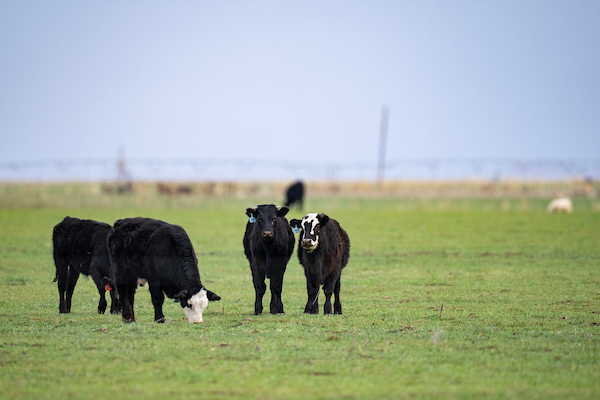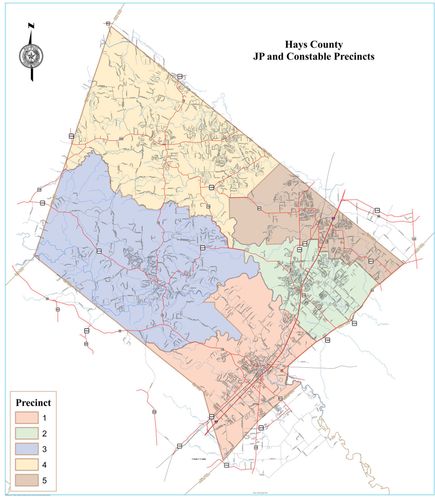2025 Western Washington Climate Report: An Analysis of Sustainable Development Goal Impacts
Precipitation Deficits and Water Scarcity (SDG 6, SDG 15)
The summer of 2025 was characterized by significantly below-average precipitation, resulting in drought conditions that pose a direct threat to regional water security and ecosystem health, challenging the objectives of SDG 6 (Clean Water and Sanitation) and SDG 15 (Life on Land). The persistent dry trend has led to moderate to severe drought across the state, as classified by the U.S. Drought Monitor.
- Seattle-Tacoma International Airport (SEA): Recorded a precipitation deficit of over seven inches for the year by the end of September.
- Olympia: Experienced a summer rainfall total more than two inches below average, contributing to an annual deficit exceeding nine inches.
- Forks: A region typically receiving over 100 inches of rain annually, finished the summer with a staggering rainfall deficit of more than 23 inches for the year, placing immense stress on its temperate rainforest ecosystem.
- Hoquiam: Concluded September approximately nine inches drier than normal for the year.
Elevated Temperatures and Climate Action Imperatives (SDG 13, SDG 3)
Above-average temperatures throughout the summer serve as a critical indicator of regional climate change impacts, underscoring the urgency of SDG 13 (Climate Action). These elevated temperatures also create public health risks associated with heat exposure, impacting SDG 3 (Good Health and Well-being).
- Increased High-Temperature Events: SEA recorded 90-degree temperatures eight times, a significant increase from the 20th-century average of three, aligning with more recent trends of frequent extreme heat. Olympia experienced 13 days at or above 90 degrees.
- Record Heat: The hottest temperature of the year at SEA was 94 degrees. Olympia and Forks both recorded highs of 95 degrees.
- Sustained Warmth: On average, the four-month period from June to September was 1.2 degrees above normal at SEA and nearly two degrees above normal in Olympia, indicating a sustained period of thermal stress on both human populations and natural environments.
Wildfire Impacts on Ecosystems and Public Health (SDG 15, SDG 3, SDG 11)
The convergence of warm and dry conditions created a severe wildfire season, directly undermining SDG 15 (Life on Land) through the destruction of terrestrial ecosystems. The resulting smoke pollution degraded air quality, presenting a significant challenge to SDG 3 (Good Health and Well-being) and SDG 11 (Sustainable Cities and Communities) by making urban and rural areas less safe and healthy.
- Widespread Fire Activity: Over 1,600 wildfires were reported across Washington State, according to the Department of Natural Resources.
- Major Incidents: The Bear Gulch fire in Mason County burned over 20,000 acres and persisted for months, representing a substantial loss of forest habitat.
- Chronic Air Quality Issues: Wildfire smoke adversely impacted air quality for the seventh time in the last nine summers, establishing a recurring environmental health crisis that affects communities across the state.
Seasonal Outlook and Path to Recovery (SDG 6, SDG 13)
The long-range forecast provides a potential pathway toward mitigating the year’s climate-related damages. An outlook for cooler and wetter conditions from December through February is critical for addressing the challenges to water security and climate resilience.
- Drought Alleviation: Increased precipitation is anticipated to provide relief from the severe dry conditions, contributing to the replenishment of water resources essential for SDG 6.
- Snowpack Restoration: The forecast offers promise for a healthier mountain snowpack, a vital component of the region’s water supply and a key factor in building resilience against future climate shocks, aligning with the adaptation goals of SDG 13.
Analysis of Sustainable Development Goals in the Article
1. Which SDGs are addressed or connected to the issues highlighted in the article?
- SDG 3: Good Health and Well-being: The article mentions the adverse impact of wildfire smoke on air quality, which directly affects human respiratory health and overall well-being.
- SDG 6: Clean Water and Sanitation: The core issue discussed is the significant lack of rainfall, leading to drought conditions. This relates to the availability and sustainable management of freshwater resources.
- SDG 11: Sustainable Cities and Communities: The article describes how communities across western Washington are affected by climate-related hazards such as drought, extreme heat, and wildfires, highlighting the need for resilience.
- SDG 13: Climate Action: The article’s focus on warmer-than-average temperatures, increased frequency of 90-degree days compared to historical averages, and the resulting extreme weather events (drought, wildfires) directly points to the impacts of climate change.
- SDG 15: Life on Land: The widespread wildfires, such as the Bear Gulch fire burning over 20,000 acres, represent a direct threat to terrestrial ecosystems, forests, and biodiversity. The drought conditions also contribute to land degradation.
2. What specific targets under those SDGs can be identified based on the article’s content?
-
SDG 3: Good Health and Well-being
- Target 3.9: By 2030, substantially reduce the number of deaths and illnesses from hazardous chemicals and air, water and soil pollution and contamination. The article’s statement that “Wildfire smoke has adversely impacted air quality seven out of the last nine summers” directly relates to air pollution affecting human health.
-
SDG 6: Clean Water and Sanitation
- Target 6.4: By 2030, substantially increase water-use efficiency across all sectors and ensure sustainable withdrawals and supply of freshwater to address water scarcity. The article details severe water scarcity, noting that SEA was “more than seven inches of rain below average” and Forks was “more than 23 inches of rainfall below average,” leading to drought.
-
SDG 11: Sustainable Cities and Communities
- Target 11.5: By 2030, significantly reduce the number of deaths and the number of people affected… caused by disasters, including water-related disasters. The article describes how drought and wildfires are impacting communities across the entire state, from Seattle to Olympia and Forks.
-
SDG 13: Climate Action
- Target 13.1: Strengthen resilience and adaptive capacity to climate-related hazards and natural disasters in all countries. The article describes multiple climate-related hazards affecting Washington, including prolonged drought, higher-than-average temperatures (“SEA was overall 1.2 degrees above average”), and an increased number of wildfires (“more than 1600 wildfires have been reported”).
-
SDG 15: Life on Land
- Target 15.1: By 2020, ensure the conservation, restoration and sustainable use of terrestrial and inland freshwater ecosystems and their services, in particular forests. The article highlights the destruction of forest ecosystems, specifying that the Bear Gulch fire “has burned over 20,000 acres.”
- Target 15.3: By 2030, combat desertification, restore degraded land and soil, including land affected by… drought. The article’s reference to the U.S. Drought Monitor, which found “moderate to severe drought conditions across… the entire state,” points directly to land degradation caused by drought.
3. Are there any indicators mentioned or implied in the article that can be used to measure progress towards the identified targets?
- Rainfall Deviation from Average: The article provides specific measurements of rainfall deficits, such as “nearly five inches below normal,” “more than seven inches of rain below average,” and “more than 23 inches of rainfall below average.” This can be used as an indicator for water scarcity (SDG 6).
- Temperature Anomaly: The text states that SEA was “1.2 degrees above average” and Olympia was “nearly two degrees above normal,” providing a clear indicator of rising temperatures linked to climate change (SDG 13).
- Frequency of Extreme Heat Days: The article notes that SEA reached 90 degrees or better eight times, compared to a 20th-century average of only three. This serves as an indicator of the increasing frequency of extreme weather events (SDG 13).
- Area of Land Burned by Wildfires: The specific mention that the Bear Gulch fire “has burned over 20,000 acres” is a direct indicator of the extent of damage to terrestrial ecosystems (SDG 15).
- Number of Wildfires: The report of “more than 1600 wildfires” in the state serves as an indicator of the increased risk and occurrence of climate-related disasters (SDG 11, SDG 13).
- Frequency of Poor Air Quality Events: The statement that “Wildfire smoke has adversely impacted air quality seven out of the last nine summers” is a qualitative but powerful indicator of air pollution affecting public health (SDG 3).
- Drought Severity Levels: The reference to the U.S. Drought Monitor classifying conditions as “moderate to severe drought” is an indicator used to measure land degradation and water stress (SDG 6, SDG 15).
4. Table of SDGs, Targets, and Indicators
| SDGs | Targets | Indicators Identified in the Article |
|---|---|---|
| SDG 3: Good Health and Well-being | 3.9: Reduce illnesses from air pollution. | Frequency of poor air quality events (“seven out of the last nine summers”). |
| SDG 6: Clean Water and Sanitation | 6.4: Address water scarcity. | Rainfall deviation from average (e.g., “more than seven inches of rain below average”); Drought severity (“moderate to severe drought conditions”). |
| SDG 11: Sustainable Cities and Communities | 11.5: Reduce the number of people affected by disasters. | Number of wildfires (“more than 1600”); Widespread impact of drought and smoke across multiple cities. |
| SDG 13: Climate Action | 13.1: Strengthen resilience to climate-related hazards. | Temperature anomaly (“1.2 degrees above average”); Increased frequency of extreme heat days (8 days at 90°F+ vs. average of 3). |
| SDG 15: Life on Land | 15.1 & 15.3: Conserve forest ecosystems and combat land degradation/drought. | Area of forest burned (“over 20,000 acres”); Proportion of land affected by drought (“across… the entire state”). |
Source: mynorthwest.com







